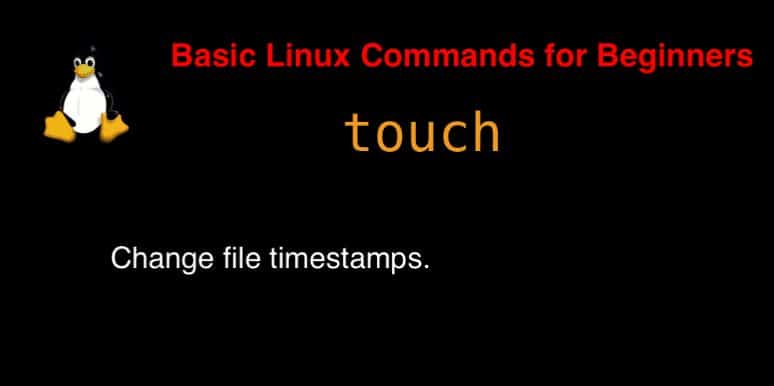Introduction
touch command means Change file timestamps. The touch command in Linux is used to create empty files or update the timestamp of existing files.
In the Linux operating system, the ability to create and manipulate files is essential for effective file management and scripting. One of the most fundamental commands for this purpose is the touch command.
The touch command is primarily used to create new empty files and update file timestamps. In this article, we will explore the touch command in detail, learn how to use it, and provide practical examples that demonstrate its capabilities in real-world scenarios.

Syntax
touch [OPTION]… FILE…
According to the man page, the touch command is used to change file timestamps.
For more detailed information about the touch command examples, you can use:
man touchtouch command in Linux with Examples
Create a new file:
$ touch devopsroles.txtCreate multiple files at once:
touch file1.txt file2.txt file3.txtSet a specific timestamp:
touch -t 202306151200.00 filename.txtCreate a new file with specific permissions:
touch -m 644 filename.txtUpdate the timestamp of a file
touch filename.txtTo set the timestamp of a file based on the timestamp of another file, use the -r option followed by the reference file:
touch -r referencefile.txt targetfile.txtTo create a file only if it does not already exist (and do nothing if it does), use the -c option:
touch -c existingfile.txtConclusion
touch command in Linux is a simple command in Linux. It is the most popular in-use terminal Linux change file timestamps.
The touch command is a versatile and essential tool in Linux for creating files and modifying timestamps. By mastering its options and syntax, you can enhance your file management skills and streamline your shell scripting tasks. Hopefully, this article has provided you with a clearer understanding of how to use the touch command effectively and apply it in your daily activities.
Keep exploring and leveraging the powerful commands in Linux to improve your efficiency and productivity in managing systems and automating tasks. Thank you for reading the DevopsRoles page!

1 thought on “Mastering the touch command in Linux: A Comprehensive Guide with Examples”